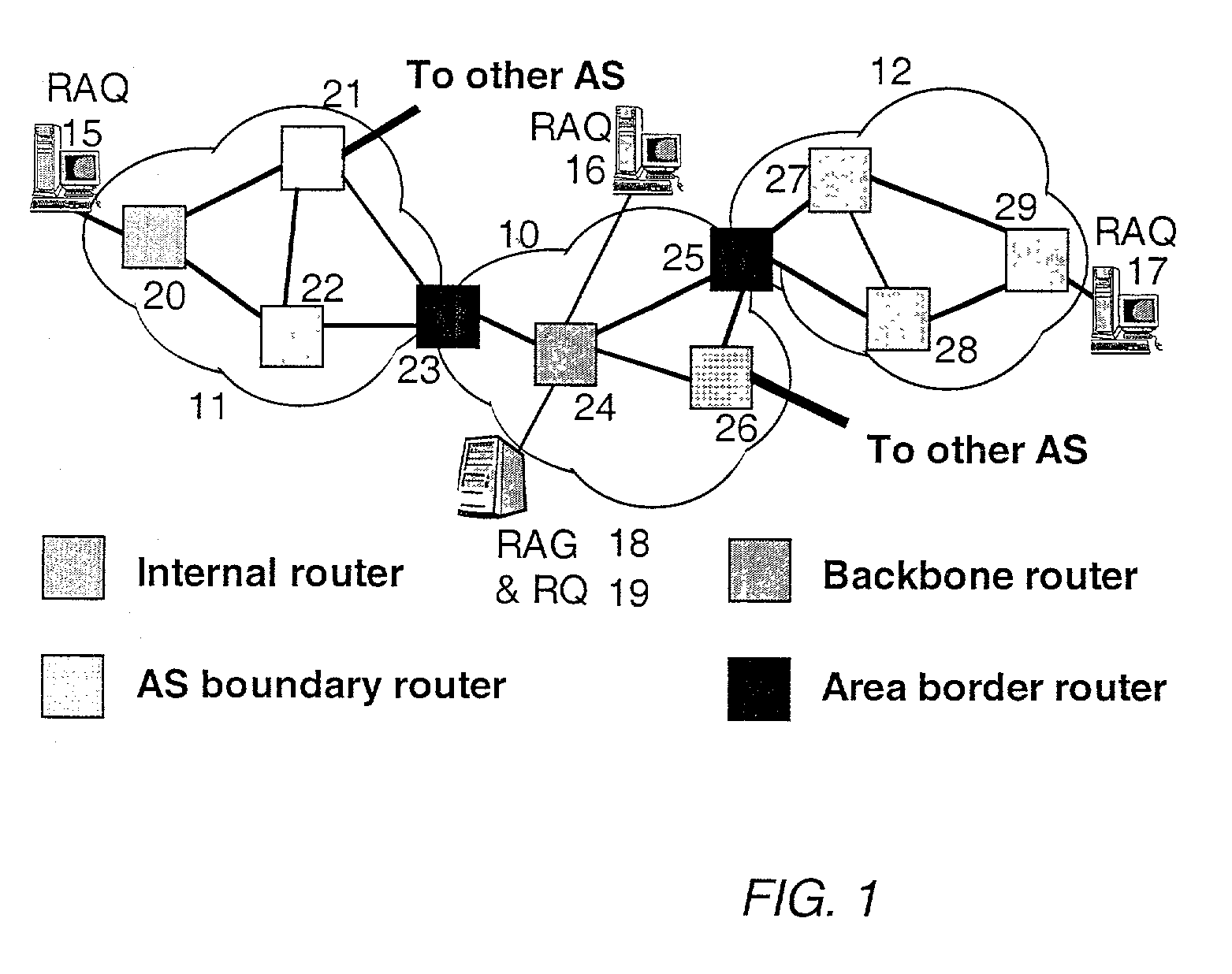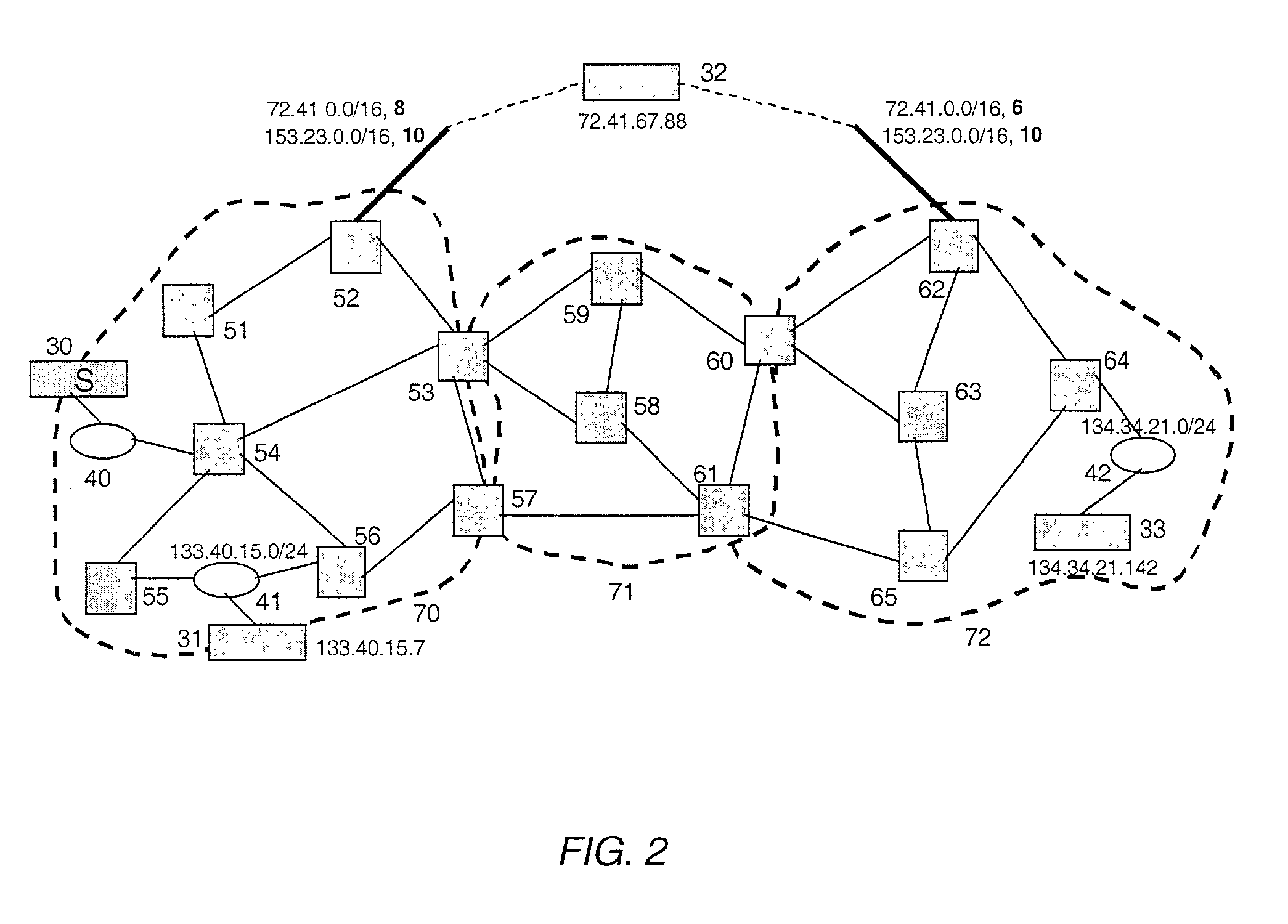Method and system for topology construction and path identification in a routing domain operated according to a link state routing protocol
a topology construction and routing domain technology, applied in the field of topology construction and path identification in a routing domain operated according to a link state routing protocol, can solve the problems of difficult if not impossible to replicate in ip networks many of the network management functions available for networks based on more traditional technologies, e.g. connection-oriented such as frame relay or asynchronous transfer mode (atm), and difficult for a network administrator to have a global view of the network at any given tim
- Summary
- Abstract
- Description
- Claims
- Application Information
AI Technical Summary
Benefits of technology
Problems solved by technology
Method used
Image
Examples
Embodiment Construction
[0033]A preferred embodiment of the present invention provides an improved method and system for monitoring, tracking, and / or predicting the routing path of one or more packets under the Open Shortest Path First (OSPF) or an analogous IP protocol.
[0034]The present invention allows a network administrator, network monitoring system, or other human or automated user to identify the path or paths followed or expected to be followed by any packet traveling though a routing domain or AS, where the packet has a known entry point or address and a known or anticipated destination address. The destination address is associated with a routing entry, typically from a routing table, and the present invention constructs the path that was or is expected to be followed through the routing domain by the packet associated with the routing entry. Optionally and preferably, when more than one path is possible, the invention is capable of constructing the complete set of possible paths, any of which th...
PUM
 Login to View More
Login to View More Abstract
Description
Claims
Application Information
 Login to View More
Login to View More - R&D
- Intellectual Property
- Life Sciences
- Materials
- Tech Scout
- Unparalleled Data Quality
- Higher Quality Content
- 60% Fewer Hallucinations
Browse by: Latest US Patents, China's latest patents, Technical Efficacy Thesaurus, Application Domain, Technology Topic, Popular Technical Reports.
© 2025 PatSnap. All rights reserved.Legal|Privacy policy|Modern Slavery Act Transparency Statement|Sitemap|About US| Contact US: help@patsnap.com



